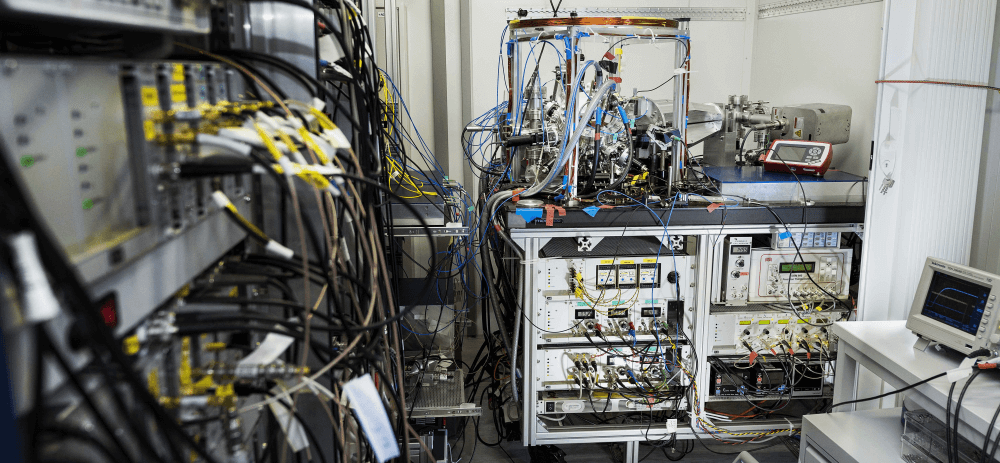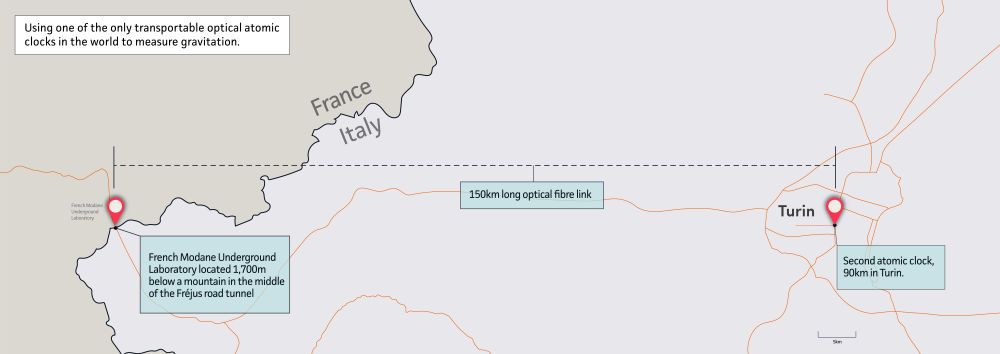An optical atomic clock can be used to measure gravity potential differences between specific sites. A clock in a stronger gravity potential, like closer to the surface of the Earth, will run slower than a clock in a weaker gravity potential, like that seen high above sea level.
In 1955, NPL built the first caesium atomic clock, enabling the length of the second to be defined much more precisely than using the motion of astronomical bodies, and since this historic landmark in timekeeping it has continued to be a world leader in this field.
Today the gold standard for clocks is the optical atomic clock, utilising the specific frequency at which a laser resonates with an atom to keep the clock ticking at a constant rate. Usually, such delicate clocks have been restricted to the lab. The best of these are so accurate that they gain, or lose, less than a second over the entire lifetime of the universe.

Now, for the first time, alongside the Physikalisch-Technische Bundesanstalt (PTB) and the Istituto Nazionale di Ricerca Metrologica (INRiM), we have used one of the only transportable optical atomic clocks in the world to measure gravitation.
Transporting these clocks is no simple task. Moving one means containing it within a vibration-damped and temperature-stabilised trailer. For this project, we took a transportable clock developed at PTB to the French Modane Underground Laboratory (LSM), located 1,700 m below a mountain top in the middle of the Fréjus road tunnel. This clock was connected to another clock, 90 km away in Turin, by a 150 km long optical fibre link, set up by INRiM. This connection enabled accurate comparison of the two clocks.

The team measured the gravity potential difference between the two clocks, and checking this against the gravity potential difference calculated using conventional geodetic techniques revealed the two measurements to be consistent. This confirms that this technique can also be used to measure gravitation.
The results, published in Nature Physics, are the first from a transportable optical clock used in this way. With improvements to the accuracy of transportable optical clocks, this technique could become powerful enough to resolve height differences as small as 1 cm across the surface of the Earth.
Optical clocks have the advantage that they can perform measurements at specific points, compared to satellite-based measurements which average the gravity potential over distances of around 100 km.
Furthermore, the clocks enable more consistent national height systems. Currently, different countries use different reference levels to look at the Earth’s surface. Therefore, despite using the same methods, they can often get different results.
The best of these atomic clocks are so accurate that they gain, or lose, less than a second over the entire lifetime of the universe.
Helen Margolis
This can have disastrous consequences. In 2003, during the joint construction of a bridge over the Rhine between Germany and Switzerland, each side used a different ‘sea level’ to calculate the required height of the structure. The result was that one side was 54 centimetres higher than the other – an inconvenient, and expensive, mistake.
This research demonstrates that optical clocks can provide a way to eliminate discrepancies between measurements from different countries, achieving consistent national height systems and eradicating this kind of engineering error. In the future, this technology could even be used to monitor how sea levels are responding to global climate change, providing an insight into seasonal and long-term trends in ice sheet masses and overall ocean mass changes.